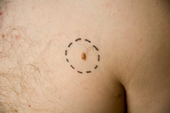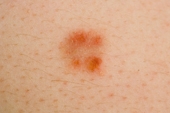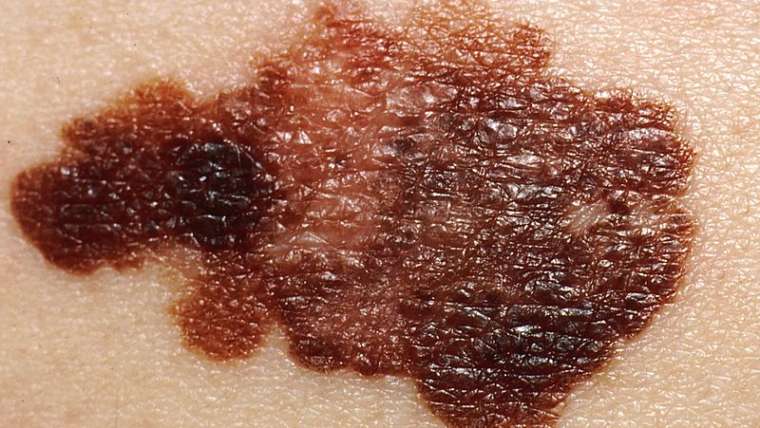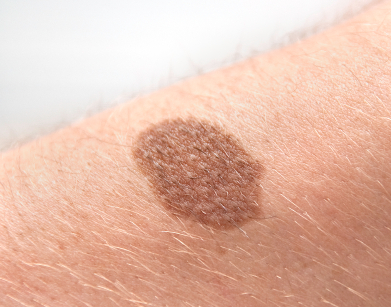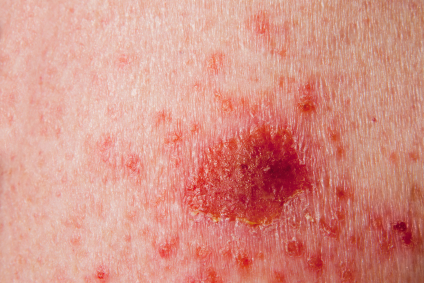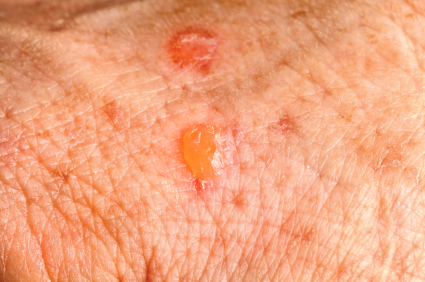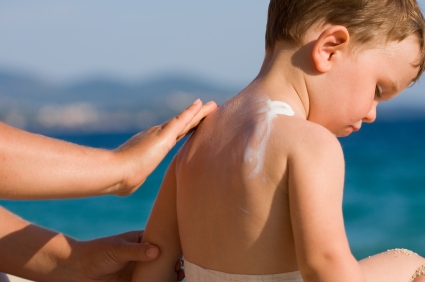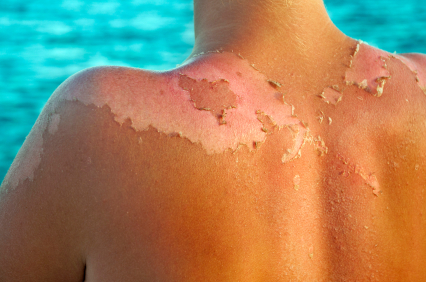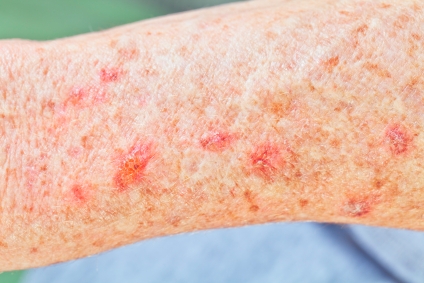Squamous cell carcinoma, also known as SCC, is a very common type of skin cancer, second only to basal cell carcinoma. Approximately 700,000 new incidences of squamous cell carcinoma are diagnosed every year in America causing approximately 2,500 deaths. Find out what you can do to protect yourself from this form of skin cancer. What is Squamous Cell Carcinoma? This…
Types and Stages of Melanoma Melanoma is the most serious and deadly form of skin cancer, but it is not as common as other types. However, the incidence of melanoma continues to rise in the United States population. The risks for melanoma increase as we age, but it is often seen in younger people. There are four main kinds of…
Melanoma forms when malignant cancer cells form in the cells that color the skin (called melanocytes). These melanocyte skin cells make melanin, which is the pigment that gives skin its natural color. Melanocytes are found in the lower part of the top layer of skin, or epidermis. Sun exposure causes these cells to produce more pigment which is why the…
Melanoma is the most serious form of all skin cancers. According to the American Academy of Dermatology (ADD), one American succumbs to advanced melanoma every hour. The incidence of melanoma occurring among U.S. citizens continues to increase due to the use of tanning equipment such as beds and face lamps. What is the incidence of melanoma? While this type of…
Many people have moles on their bodies. It may be difficult for you to tell the difference between a common mole and a concerning mole. Dysplastic nevi are atypical moles that have a greater chance of becoming skin cancer. The medical term “nevi” is the plural form of “nevus”, and a nevus is another name for a mole. Find out…
Accounting for greater than 90% of all skin cancers occurring among Americans, basal cell carcinoma (BCC) is the most prevalent type. While it rarely metastasizes (spreads) to other sites in the body, BCC may cause damage to surrounding tissues. Find out about the warning signs of BCC, the causes of BCC, risk factors for BCC, and BCC prevention measures. Generalized…
Actinic Keratosis Currently, there are more than 58 million Americans affected by the skin condition known as actinic keratosis. This common skin cancer precursor is characterized by crusty or scaly lesions, which are caused by the sun’s damaging ultraviolet rays. Doctors often refer to this skin disorder as solar keratosis. What is Actinic Keratosis? Actinic keratosis (commonly referred to as…
Protecting you children from the sun is one of the most important things you can do to ensure they maintain healthy skin. Young children are at a high risk for sun damage because their skin pigmentation is still weak. As your children age, their skin pigmentation becomes stronger. However, that does not mean they can spend endless hours in…
Simply put, sunburn is a skin inflammation that can have serious consequences if it occurs repeatedly. A sunburn is the result of overexposure to harmful ultraviolet (UV) radiation from the sun or overuse of an ultraviolet tanning lamp or tanning bed. The eyes also incur damage from a burn. In the United States, sunburns are extremely common. The Centers for…
Anyone who ventures out into the sun without sunscreen is at risk for sun damage. It is important to realize that there are several types of sun damage. Some damage is barely noticeable, but other types, such as skin cancer, can have devastating effects. Certain skin types and ethnic groups are at a higher risk for developing sun damage,…
How do I Protect Myself from UV Rays? There are several ways to protect against ultraviolet (UV) rays, although some people require more protection than others. The most important thing to remember, when you are exposed to UV rays, is that your skin may be being damaged even with sunscreen. To learn way to safely enjoy those sunny days spent…
Skin Self-Exams The Skin Cancer Foundation recommends that everyone do monthly head-to-toe self-examination of their skin. This is to find any new or changing lesions that could be precancerous or even cancerous. When you find skin cancer early, it is almost always curable. Find out about the warning signs of skin cancer and what to look for when you do…
Skin Cancer Symptoms Some forms of skin cancer affect more than one million Americans every year. The most common of all cancers is skin cancer, and it develops when normal skin cells uncontrollably transform, grow and multiply into abnormal lesions or tumors. Tumors are only considered cancerous if they are diagnosed as being malignant. Malignancy means atypical cells crowd and…
Quick Facts about Skin Cancer Considered the most prevalent form of cancer reported in the U.S., an excess of three million skin cancers are professionally diagnosed in over two million people every year.Annually, there are more reported instances of skin cancer than the incidences of lung, colon, prostate and breast cancers combined. General Skin Cancer Facts Twenty percent of…
Most of us realize that aging has a direct impact on our skin. The reduction of elasticity causes the skin to become wrinkled and age. Find out about these 7 rejuvenation procedures that can reverse the signs of aging. Miraculous Microdermabrasion Microdermabrasion treatments are a non-surgical way to increase the vitality and beauty of the skin, specifically on the facial…
Skin & Laser Dermatology Center congratulates Dr Amir Bajoghli for being recognized as a 2013 Top Doctor in several different publications including Washingtonian, Northern Virginia Magazine, U.S. News & World Report, and Castle Connolly. Dr. Bajoghli has been given this recognition now every year since 2005, as a testament and commitment to providing the best dermatological care for his patients.
It’s a well-known fact that melanomas are dangerous skin cancers that need to be dealt with early in order to avoid the worst case scenario, which is quite possibly death. However, the same goes for basal cell carcinomas (BBC) and squamous cell carcinomas (SCC), which are two other equally threatening skin cancers. Similarly to melanomas, these two cancers will severely…
With the risks and warnings that have been discovered regarding tanning as a practice, several myths have also come into play as well. One of such myths is that getting a base tan is safe and that it will even protect your skin. However, this could not be farther from the truth. Ultraviolet radiation, no matter where it is from,…
NBC Nightly News (1/4, story 6, 1:45, Williams) reported, “The American Cancer Society’s annual report on cancer stats and cancer trends is out today with some encouraging news inside it. For the biggest cancer killers, death rates are down across the board over the past two decades; 23% for men, 16% for women,” which “works out to about a million…
With so many sunscreens on the market, how do you know which sunscreen is right for you? Tips for Choosing the Right Sunscreen (according to the American Academy of Dermatology) : Sunscreens should have: Broad-spectrum coverage (UVA and UVB protection) SPF 30 or higher Water resistance Tips to maximize your protection against harmful UV rays: Re-apply the sunscreen every two…


